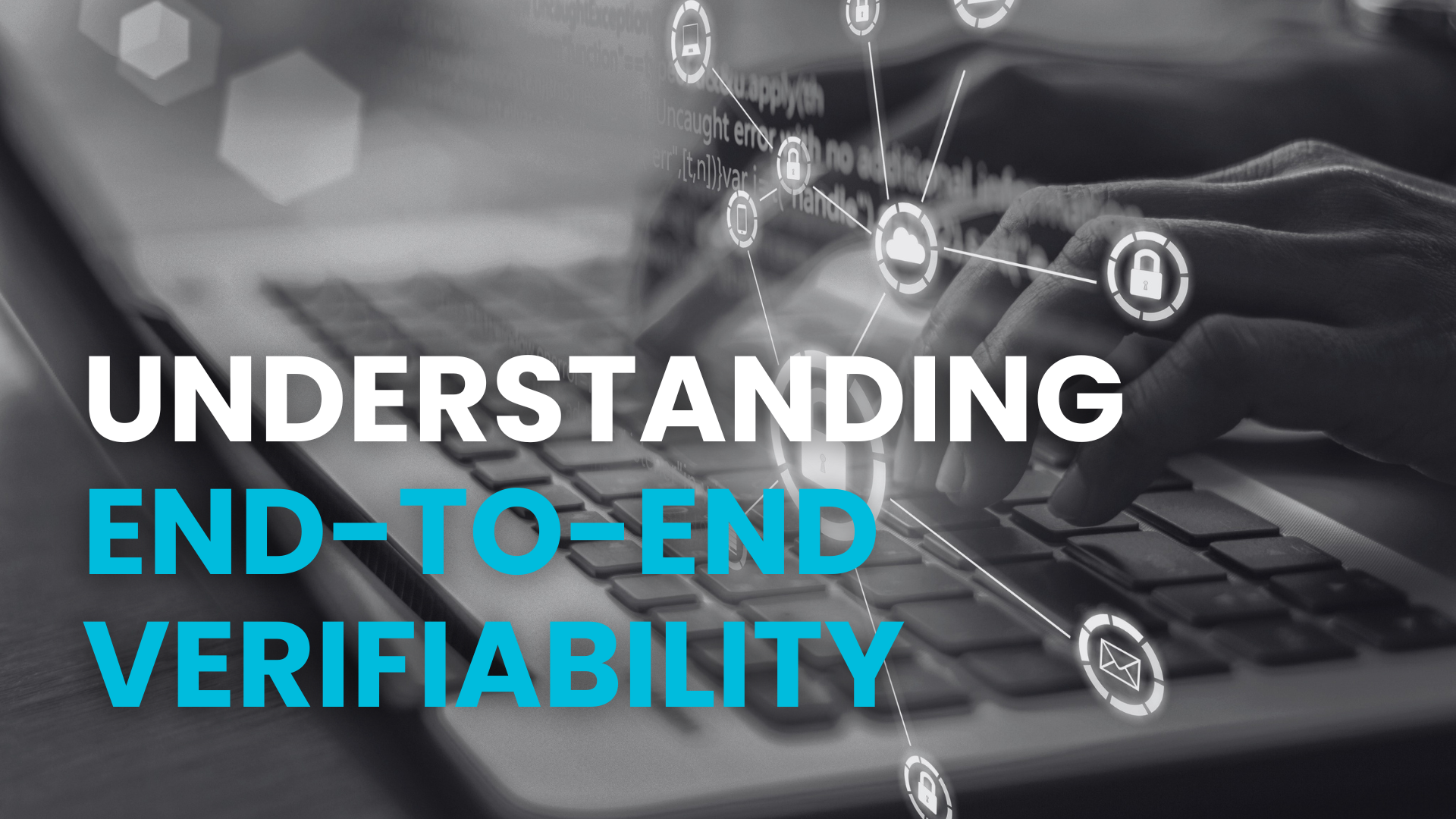Yes, Online Voting Can Be Secure

Mirror mirror on the wall, which elections were the fairest of them all?
You could have asked this question more than once after any elections in your district, province, or country. Because in real life, correctly calculating election results is critical. Even more, so is convincing voters that everything went right and above board.
During traditional elections, voters are not allowed to participate in the vote-counting process. They are only informed of the results "as a matter of fact," and they can only wonder what happened behind closed doors. Lack of transparency can lead to even resentment at the results of elections.
And this is where End-to-End Verifiability comes into play. A somewhat pretentious name, so let's call it E2EV and explain what it is.
What Is It?
Imagine that this is your golden ticket behind the scenes of an election. Where you can ensure that your vote was counted as cast, how many people already voted for this or that candidate, and whether a third party tried to interfere in the election. This system can provide evidence that each election step was performed correctly and accurately.
How Does It Work?
On election day, you come to the polling station to cast your vote or sit at home on a comfortable sofa and vote online. After you have voted, you are given a kind of check with a QR code or other encrypted item. With the help of an application on your phone, you can scan this code and make sure your vote is counted correctly. It's like scanning a menu at a restaurant. E2EV makes this possible by creating a unique tracking number cryptographically linked to how you cast your vote, ensuring that any attempt to alter your ballot could be detected. [1] In short, E2EV is designed to provide accurate, tamper-proof elections.
Moreover, E2EV allows everyone — news media, political parties, candidates, voters, and outside observers — to thoroughly audit the results of an election, ensuring that all ballots are counted as cast while protecting voters' privacy. E2EV enables this feature using homomorphic encryption — a particular type of encryption that allows people to perform certain mathematical operations, such as addition, on encrypted data without first decrypting it. [1]
If you are worried that your information will be transferred to a third party and can be used against you, then this system has already provided for it - you will be given an encrypted pseudonym when you register. No one can find out who you voted for except yourself.
In practice, the whole process looks like this:
The first and second steps often involve providing the voter with a code/"receipt" upon finalizing the casting of their ballot, which they can use to carry out this check. The third step relies on mathematical proofs and either mixes the ballots by removing voters' personal information and decrypting the votes or uses something called "homomorphic encryption," which allows for the votes to be tallied without decrypting them to verify the tally is correct. [2] The key to this third element is ensuring the election results are tabulated correctly without revealing additional information about the votes or voters.
Another advantage is that End-to-end Verifiable election technologies can be used in paper-based and fully electronic systems, remote voting systems, and in-person poll-site systems, with simple majority counting methods and many complex preferential schemes. [3]
E2EV technology can create a tamper-evident, verifiable paper trail for each vote cast in paper-based systems. This paper trail can be used to conduct a manual recount if necessary, ensuring that the election results are accurate and transparent.
Fully electronic systems can also benefit from E2EV technology by securely transmitting and counting votes, ensuring that each vote is recorded accurately and that the election results are verifiable.
Remote voting systems can use E2EV technology to create a secure and verifiable voting process for those unable to vote in person. This can include military personnel, overseas voters, and those with disabilities.
Finally, in-person poll-site systems can use E2EV technology to improve the security and transparency of the voting process by verifying each vote as it is cast and by providing a verifiable paper trail that can be used to conduct a manual recount if necessary.
In all of these cases, E2EV technology provides a secure, transparent, and verifiable voting process, helping to enhance the credibility and integrity of the election results.
While technical experts state that individual verifiability is essential, there is a near "universal" consensus that an E2E verifiable system is necessary for electoral integrity and proper audibility. The idea of universal verifiability is premised on having evidence-based results or proof for the voter that their vote made it into the ballot box as they intended and that anyone can establish that the votes were tallied correctly. [3] Because trust in elections is crucial to a healthy democracy.
Company Neuvote is using E2EV technology to enhance the transparency and security of its online voting system. The company aims to provide a secure and transparent voting experience for voters, allowing them to participate confidently in the election process. By using E2EV, Neuvote is taking a step towards ensuring the integrity of elections and supporting the principles of democracy.
In conclusion, End-to-End Verifiability (E2EV) technology ensures electoral integrity and clarity. E2EV allows each step of the election process to be verified and audited, ensuring voters that their votes are counted correctly and accurately. This system can also protect voters' privacy using encrypted pseudonyms and homomorphic encryption. The benefits of E2EV can be applied to various voting systems, including paper-based, fully electronic, remote voting, and in-person poll-site systems. Overall, E2EV helps build trust in elections and supports the foundation of a healthy democracy.
Sources
1. https://www.govtech.com/opinion/end-to-end-verifiability-key-to-future-election-security.html
2. Benaloh, J., Rivest, R., Ryan, P. Y. A., Stark, P., Teague, V., & Vora, P. (2014). End-to-end Verifiability.

